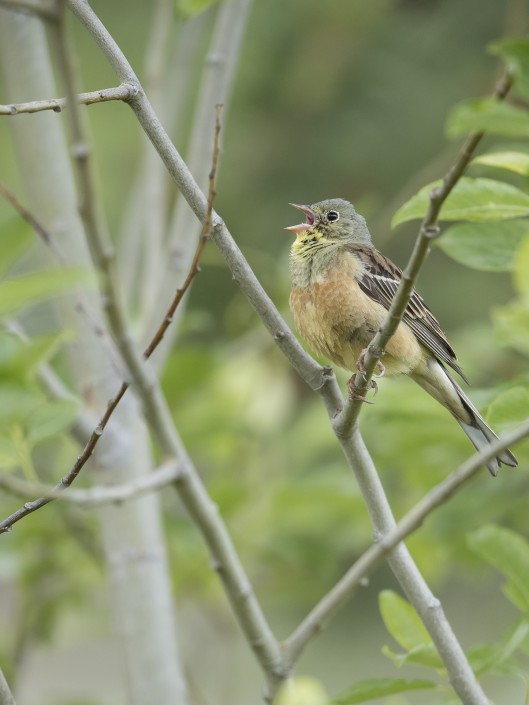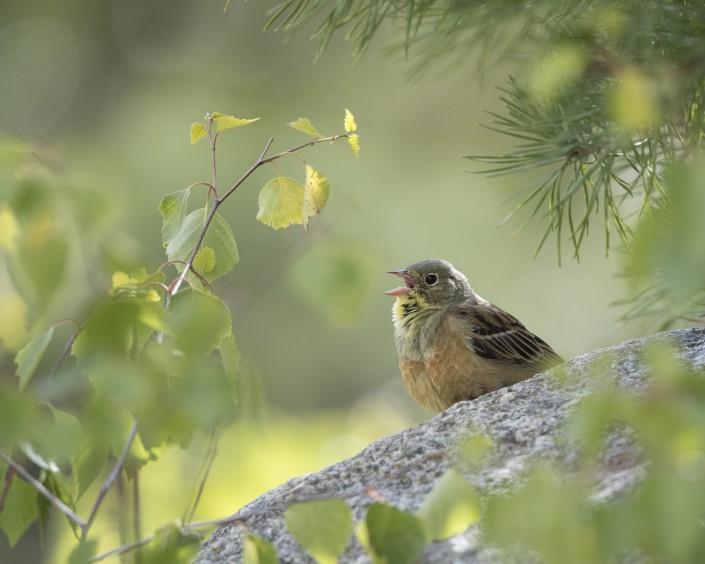This post is also available in: Swedish
Ortolan bunting – Emberiza hortulana
Ortolan bunting – Emberiza hortulana
is a bird in the bunting family Emberizidae, a passerine family now separated by most modern scholars from the finches, Fringillidae. The name ortolan is French, from the Latin hortulanus, the gardener bird, (from hortus, a garden). The ortolan is 16 cm in length and weighs 20–25 grams (0.71–0.88 oz). In appearance and habits it much resembles its congener the yellowhammer, but lacks the bright colouring of that species; the ortolan’s head, for instance, is greenish-grey, instead of a bright yellow. The song of the male ortolan resembles that of the yellowhammer. A native of most European countries and western Asia, its distribution throughout its breeding range seems to be very local, and for this no obvious reason can be assigned. It reaches as far north as Scandinavia and beyond the Arctic Circle, frequenting cornfields and their neighbourhoods. It is an uncommon vagrant in spring, and particularly autumn, to the British Isles. Ortolan hunting was banned in France in 1999, but the law was poorly enforced and it is thought that up to 50,000 ortolans were killed each year. According to France’s League for the Protection of Birds, France’s ortolan population fell 30 per cent between 1997 and 2007. In 2007, the French government vowed to strictly enforce some existing rules about banning the practice, with the maximum fine set at €6,000 (£4,800). Killing and cooking ortolans is banned across the EU. In 2007, the pressure from France’s League for Protection of Birds and from the European Union resulted in the French government promising to enforce the EU directive protecting the ortolan.
It sounds like this
recording by Piotr Szczypinski from Xeno canto
















